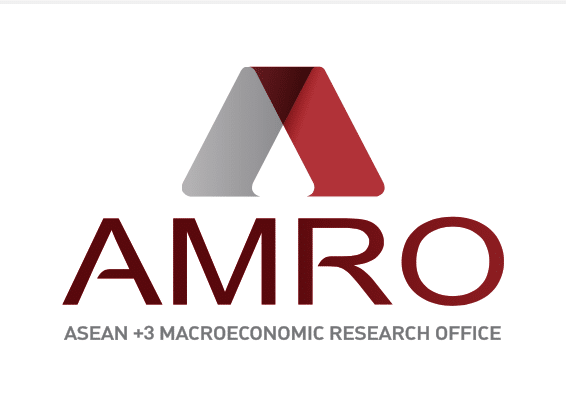AMRO cuts growth estimates to 6.1% this year, 6.3% in 2025
For the Philippines
By Lee C. Chipongian
The ASEAN+3 Macroeconomic Research Office (AMRO) now expects the Philippine economy will grow slower at 6.1 percent for 2024 and 6.3 percent for 2025 compared to its earlier projection of 6.3 percent and 6.5 percent, respectively, despite moderating inflation and sustained growth.
Based on AMRO’s latest ASEAN+3 Regional Economic Outlook (AREO) July update report released Tuesday, July 16, AMRO economists see domestic growth sustaining its momentum as inflation further decelerates to within the target range of two percent to four percent, and as the central bank signals its first rate cut as soon as August.
AMRO Chief Economist Hoe Ee Khor said the Philippine economy is doing well at the moment and at a projected 6.1 percent growth for 2024, he thinks it is “a pretty strong growth for an emerging market” with a Bangko Sentral ng Pilipinas (BSP) that has “a lot of flexibility in deciding when to lower the rates” currently at 6.5 percent.
“Inflation has finally come off the peak and (the BSP) governor has indicated they’re ready to move when the Fed (US Federal Reserve) moves,” he said in a press briefing Tuesday.
Khor said AMRO adjusted the gross domestic product (GDP) growth forecast lower from 6.3 percent to 6.1 percent for this year due to the first semester data which showed a modest growth for the first quarter as well.

“We’ve (lowered forecasts) not just for the Philippines but for many countries in the region because as it turns out, the recovery in the external sector was weaker than expected (but) we think the Philippines’ growth will be robust and next year it will be 6.3 percent. This is well within the official range of 6-7 percent. We’re looking at the data closely and we may revise it up in the second half if the data shows the economy has picked up more strongly,” said Khor.
The latest AREO likewise adjusted its inflation estimates for the Philippines to 3.3 percent for 2024 from its April forecast of 3.6 percent. For 2025, it expects inflation to be higher at 3.1 percent versus its previous forecast of 2.9 percent.
According to Khor, “more recently disinflation has picked up momentum and inflation has come off faster than expected so as a result inflation is now within the (target) band.”
He noted though that the BSP is maintaining relatively tight policy settings until inflation has come down more decisively.
Khor further noted that central banks in the region are waiting for the Fed to move first but some of them can cut now if they are so inclined including the Philippines since inflation is well-anchored and growth is robust. “That gives central banks the flexibility to cut the rates. But the central banks are holding back because of the exchange rate weakness but pass through to higher prices are very low,” he added.
Meanwhile, in terms of sustaining growth, Khor strongly recommends the government improve its regulatory environment to attract more foreign investments.
“That’s one of the weakness in the Philippine economy, the infrastructure gap. The government is very conscious of that. Unfortunately, fiscal space has been used up to some extent during the pandemic but our assessment is there is still moderate fiscal space in the Philippines and they need more foreign investments to help domestic savings. It’s one area the Philippines need to work on, together with the liberalization of the regulatory regime. The investment regime is somewhat more restrictive than some of the other peer economies in the region,” said Khor.
Based on the July AREO, growth in the region is sustained but downside risks remain.
Based on current data, AMRO has decided to maintain its 2024 and 2025 growth forecasts for the ASEAN+3 region at 4.4 percent and 4.3 percent, respectively, citing favorable exports, domestic demand and continued recovery in tourism.
This was lower compared to its April AREO projection of 4.5 percent ASEAN+3 growth for 2024. For ASEAN alone, growth is expected to improve to 4.8 percent this year versus 4.2 percent in 2023.
“The overall balance of risks to the region’s outlook has improved since April,” said Khor, adding that “real estate aside, China’s economy continues to grow robustly” and that “tourism has rebounded close to pre-pandemic levels for most economies in the region (while) the global semiconductor recovery is broadening to benefit more economies and sectors in ASEAN+3.”
AMRO forecasts inflation in the ASEAN+3 region—excluding Lao PDR and Myanmar— will settle at 2.1 percent in 2024 which was lower than the April forecast of 2.5 percent. “However, downside risks to inflation remain, especially if geopolitical tensions worsen and trigger spikes in global commodity and shipping prices,” it said.
Some of the risks cited by AMRO are the US-related factors such as the election in November.
The “higher-for-longer interest rate expectations in the US have weighed on many of the region’s currencies” as well.
The ASEAN+3 asset markets “could also see higher volatility in the run-up to the November presidential election, especially if the election campaign leads to a further escalation in US–China trade tensions,” said AMRO, an international organization established to monitor and secure macroeconomic and financial stability of the ASEAN+3 region.
“The bad news is that the region’s outlook next year could be significantly affected by the outcome of the US elections. The good news is, the region has weathered similar shocks before,” Khor said. “Our economies need to keep rebuilding policy space and pursue policies to enhance resilience to shocks,” he also said.